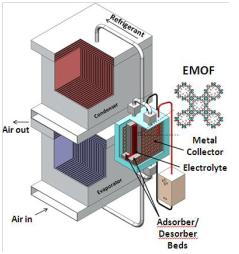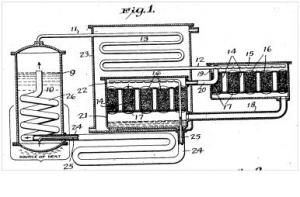Molecular Heat Pump for Electric Vehicles
Posted Tuesday, March 13, 2012.
Pacific Northwest National Laboratory researchers will lead three projects whose $3.8 million funding was announced this week by the Department of Energy’s Advanced Research Projects Agency for Energy. The projects are aimed at dramatically improving how the U.S. produces and uses energy. One of these projects is aimed at achieving more efficient heating and cooling of electric vehicle cabins.
Internal combustion engines in today’s cars generate a lot of heat, which is great for heating the passenger cabin in winter. Electric vehicles produce very little waste heat, so providing electricity for the same amount of heat would reduce their driving range by as much as 40 percent. PNNL scientists Pete McGrail and Praveen Thallapally, and University of South Florida chemists Mike Zaworotko and Ma Shengqian will receive $800,000 to develop a material called an electrical metal-organic framework, or EMOF for short, for vehicle heating and cooling systems. The EMOF would work as a molecular heat pump, which efficiently circulates heat or cold as needed. By directly controlling the EMOF’s properties with electricity, their design is expected to use much less energy than traditional heating and cooling systems. For example, a 5-pound EMOF-based heat pump the size of a 2-liter bottle could theoretically handle the heating and cooling needs of an electric vehicle with far less impact on driving distance.
http://arpa-e.energy.gov/LinkClick.aspx?fileticket=HCoBAliXXWE%3d&tabid=525
This type of heat pump appears to be a variation on a century-old absorption refrigeration technology, which required no refrigerant gas compressor but was largely abandoned for being bulky and difficult to operate efficiently. An early patent, 1920612, was awarded to Platen and Munters in 1933. The technique works by transporting refrigerant into and out of a liquid solution (the absorber) across a pressure gradient. The Platen-Munters patent describes the process well.
Platen-Munters Patent 1,920,612
The PNNL work appears to be focused on the EMOF bed as a means to overcome the limitations of the earlier devices. If the result is much higher efficiency, it would be very widely applicable. For example, about 15% of all electricity usage in the U.S. is air conditioning: a few-percent improvement in efficiency could reduce this load substantially.


